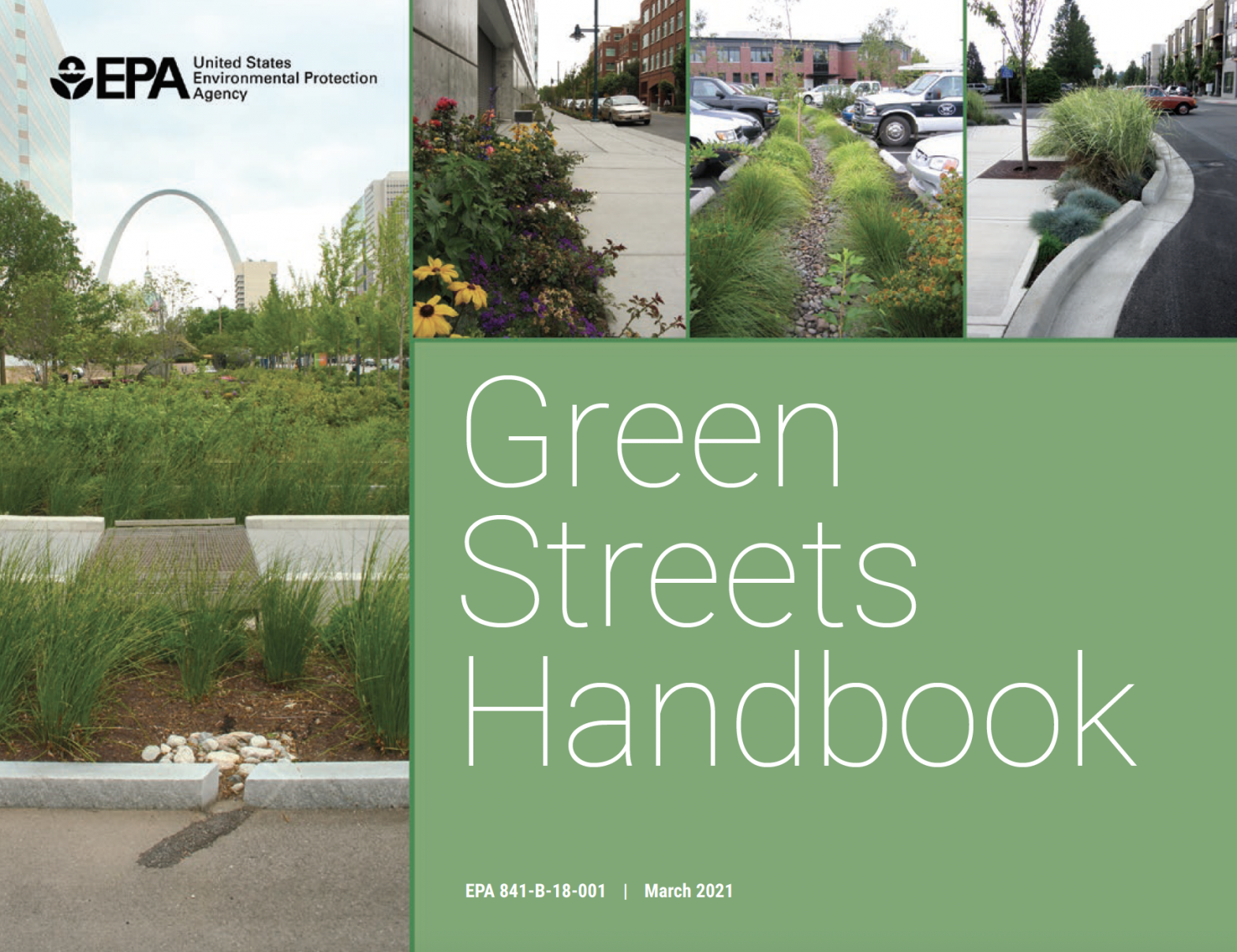Green streets can provide many environmental, social and economic benefits. In addition to the stormwater runoff reduction and water quality improvement benefits, green streets can be designed to calm traffic, provide safer pedestrian and bicycle paths, mitigate urban heat island effects, improve community aesthetics, promote a sense of place and stimulate community investments. These enhancements can help to make a “green and complete street” that is safe and accessible for all users while also being friendlier to the environment and beneficial for the community at large.
This handbook is intended to help state and local transportation agencies, municipal officials, designers, stakeholders and others to select, design and implement site design strategies and green infrastructure practices for roads, alleys and parking lots. Green infrastructure practices are designed to mimic natural systems by intercepting, infiltrating and evapotranspiring stormwater to reduce runoff and protect or restore site and watershed hydrology.
The document provides background information on street and road typologies and offers a programmatic framework to use when identifying areas that can be initially designed or later retrofitted with green infrastructure practices or systems. The handbook also contains information about green street design considerations, pretreatment and stormwater management practices, and external resources with additional detail for readers who wish to go deeper into a specific topic.
